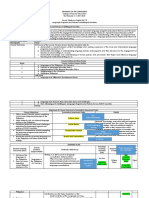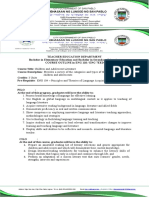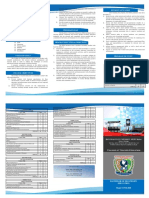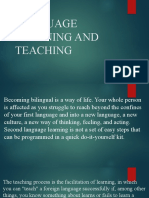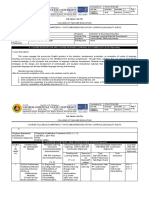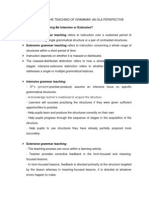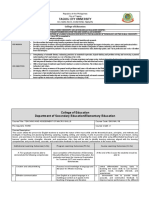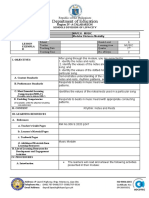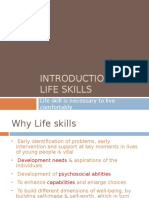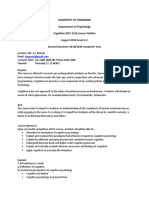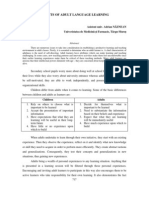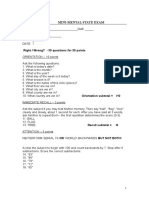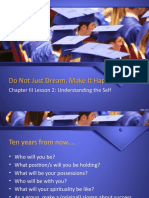0% found this document useful (0 votes)
382 views7 pagesTeaching English in The Elementary Grades (Language Arts) Bem Iii
This document outlines the syllabus for a course called "Teaching English in the Elementary Grades (Language Arts)" at the College of Teacher Education in Lipa City, Philippines. The course aims to improve students' knowledge of English language teaching methodologies. It will cover principles of language teaching, considering learner variables like age and proficiency. Students will learn how to plan effective lessons incorporating classroom management techniques and using strategies like discussion, activities, and quizzes to engage learners. The syllabus details learning outcomes, assessment tasks, content, materials and durations for units covering topics such as teaching principles, learner variables, lesson planning, and classroom management.
Uploaded by
Avon RockwellCopyright
© © All Rights Reserved
We take content rights seriously. If you suspect this is your content, claim it here.
Available Formats
Download as DOCX, PDF, TXT or read online on Scribd
0% found this document useful (0 votes)
382 views7 pagesTeaching English in The Elementary Grades (Language Arts) Bem Iii
This document outlines the syllabus for a course called "Teaching English in the Elementary Grades (Language Arts)" at the College of Teacher Education in Lipa City, Philippines. The course aims to improve students' knowledge of English language teaching methodologies. It will cover principles of language teaching, considering learner variables like age and proficiency. Students will learn how to plan effective lessons incorporating classroom management techniques and using strategies like discussion, activities, and quizzes to engage learners. The syllabus details learning outcomes, assessment tasks, content, materials and durations for units covering topics such as teaching principles, learner variables, lesson planning, and classroom management.
Uploaded by
Avon RockwellCopyright
© © All Rights Reserved
We take content rights seriously. If you suspect this is your content, claim it here.
Available Formats
Download as DOCX, PDF, TXT or read online on Scribd
/ 7











